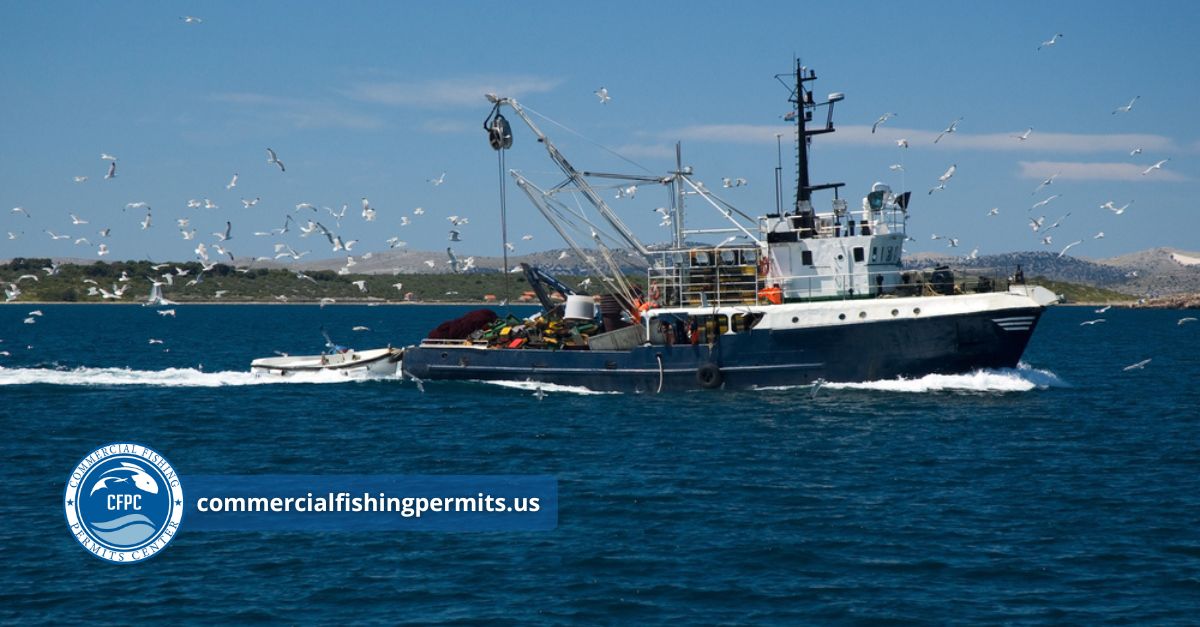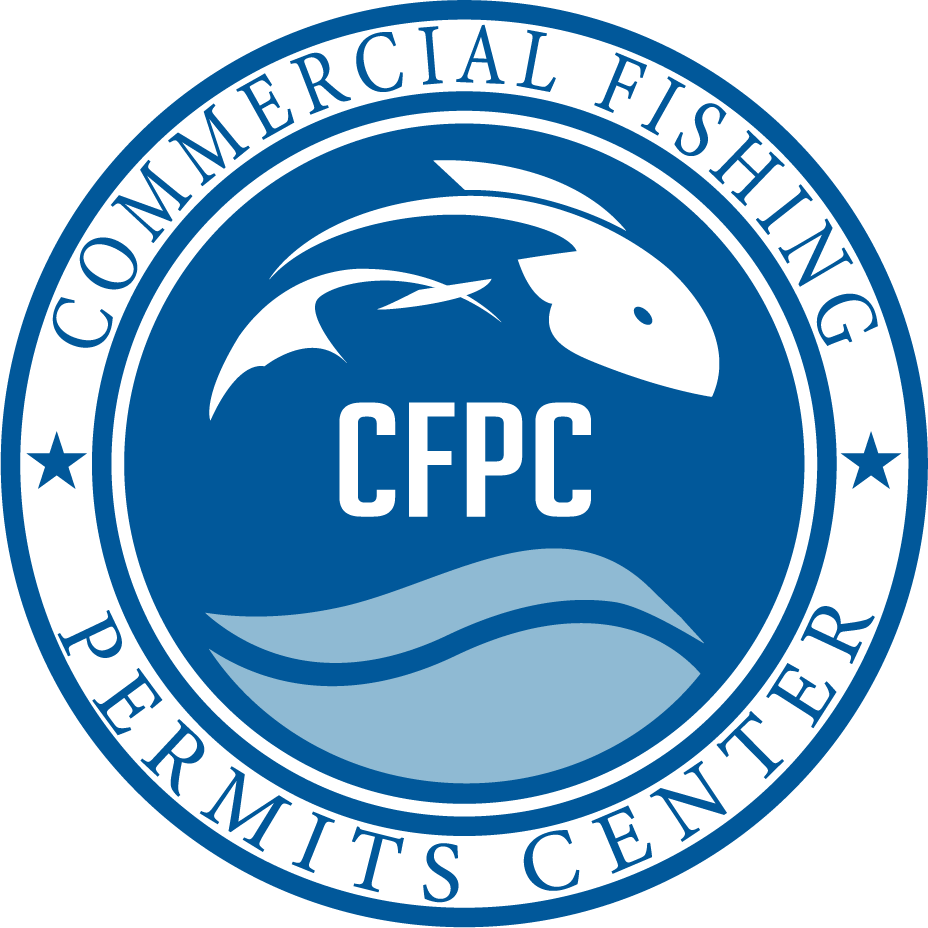This depends on how you plan to harvest halibut. In Alaska, halibut fishing is managed primarily under the Individual Fishing Quota (IFQ) Program, the Community Development Quota (CDQ) Program, and the Sport Charter Halibut Program. Each requires different applications, renewals, and record-keeping. We can help you determine exactly which Alaska fishing permits you need and assist in acquiring or renewing them properly.

For commercial halibut fishing under the IFQ system, you will generally need:
- An IFQ permit
- A quota share certificate
- A vessel registration specific to the IFQ fishery
- IFQ landing report forms
- A CDQ permit, if participating under that framework
For those engaged in charter operations, the required permits differ:
- A Sport Charter Halibut Permit
- Annual registration with NOAA
- Submission of Alaska Charter Halibut Logbook pages
- Recreational Quota Entity (RQE) applications, if applicable
Our portal streamlines each of these filings, helping you meet deadlines and stay within regulatory compliance.
What’s the Difference Between IFQ and CDQ Halibut Permits?
The Individual Fishing Quota (IFQ) system allocates halibut harvest privileges to individual quota holders based on vessel category and region. This system is designed to promote responsible, sustainable harvests.
The Community Development Quota (CDQ) system, on the other hand, is designed to support eligible Western Alaska communities. These communities receive a percentage of the overall allowable catch, which they then assign to fishermen operating on their behalf.
We offer access to both sets of applications through our Alaska IFQ Halibut, Sablefish, and CDQ Halibut Program page. Whether you’re applying as an individual or as part of a CDQ group, our system ensures accurate and timely filing.
Do I Need a Separate Permit for Sablefish?
Yes. If you’re planning to fish for sablefish alongside halibut—an increasingly common practice—you’ll need separate IFQ permits. Both halibut and sablefish fall under the North Pacific IFQ Program, but each species has its own quota share and corresponding documentation.
We offer the complete application packets for these fisheries. Our platform also provides clear guidance on how to handle annual renewals, transfers, and vessel changes for these permits.
How Does the Sport Charter Halibut Permit Process Work?
For operators running guided halibut charters in Alaska, the Sport Charter Halibut Permit is essential. These permits are required for all charter businesses targeting halibut and must be renewed each year.
In addition to the core permit:
- Operators must register their charter business annually with NOAA
- Accurate records must be kept using official logbooks
- Reports must be submitted on time, using correct forms
We offer a central page for all Alaska sport charter halibut permit applications and reporting forms. Our platform allows you to easily download, complete, and submit these forms without the hassle of navigating multiple federal agency websites.
Can I Transfer My IFQ Halibut Permit or Quota Share?
Yes, but there are restrictions. Transfers of quota share (QS) and IFQ permits require approval through NOAA and must meet eligibility criteria. This includes ownership history, vessel category limits, and regional quota availability.
We simplify this process by providing all necessary transfer forms in one place, along with instructions tailored to your specific case. Our team is also available to help clarify transfer limitations and ensure your submission meets NOAA standards.
Do I Need to Renew My Alaska Halibut Permits Every Year?
Most halibut-related permits—whether IFQ, CDQ, or sport charter—require annual renewals. Missing deadlines can result in your inability to fish or transfer rights for that season.
Our service sends reminders ahead of renewal deadlines, helping you avoid costly delays. We also walk you through the renewal process step by step, reducing the chance of mistakes or incomplete filings.
What Are the Permit Requirements for State-Managed Halibut Fishing?
While most halibut management falls under federal oversight, there are cases where state-level regulations apply—particularly in nearshore fisheries or smaller-scale commercial harvests. These require additional permits through the Alaska Department of Fish and Game (ADF&G).
Through our Alaska state fishing permits section, we connect you to ADF&G commercial permit applications. This includes:
- Interim-use and limited-entry permits
- Vessel registration for state fisheries
- Special harvest area access
By combining state and federal permit access in one platform, we help you meet all Alaska fishing requirements without having to switch between different agencies.
How Can Your Service Help Me With Alaska Halibut Permits?
We provide a centralized, easy-to-navigate online portal that covers all major Alaska halibut fishing permits—commercial, charter, and quota-based. Through our site, you can:
- Access IFQ and CDQ application packets
- Download sport charter permit forms
- Submit renewals and modifications
All of our forms are kept up-to-date with the latest regulations and deadlines. By using our portal, you eliminate guesswork and minimize errors that could delay or void your fishing plans.
Can I Use the Same Vessel for IFQ Halibut and Other Alaska Fisheries?
In some cases, yes. However, vessel documentation and permit registration must reflect all fisheries for which you are participating. Using a vessel for multiple fisheries—especially if one includes halibut—requires additional oversight and sometimes specific endorsements.
We help you verify your vessel’s eligibility, submit necessary forms for multi-use registration, and ensure your documentation is in good standing for each fishery you intend to enter.
Are There Permit Requirements If I Lease My Vessel to Another Fisherman?
Yes. If you’re leasing your vessel out, both you and the lessee must meet certain regulatory obligations. Depending on the type of permit involved (e.g., IFQ vs. CDQ), the vessel may need to be registered under the lessee’s name, and reporting responsibilities may shift.
Our platform helps you complete these requirements properly and quickly, reducing the risk of regulatory penalties or permit rejections.
What Happens If I Miss a Filing Deadline for My Alaska Halibut Permit?
Missing a filing deadline can mean you lose the right to fish for that season or may have to reapply under less favorable conditions. In cases like quota renewals, a missed deadline can also impact your long-term eligibility.
We offer renewal reminders and easy access to extension request forms, when applicable. Our goal is to keep your fishing operation compliant and active throughout the season.
Do You Offer Help With Other Alaska Fishing Permits Beyond Halibut?
Absolutely. While halibut is one of the most heavily regulated and sought-after fisheries, we also support applications and renewals for:
- Sablefish
- Salmon
- Herring
- Crab
- Groundfish
- Shellfish
Our state and federal permit resources for Alaska cover nearly every major commercial fishery. Whether you’re new to the industry or looking to expand your operations, our service can help you stay licensed, compliant, and ready to fish.
How Do I Get Started With Alaska Fishing Permits?
Getting started is simple. Visit the Alaska section of our website and select the permit category that matches your fishery. From there, you can download application packets, review filing instructions, and submit completed forms through our secure portal.
If you’re unsure where to begin, our support team is available to help point you to the correct forms based on your vessel, fishery type, and region. We’re here to simplify Alaska fishing permits so that you can focus on what you do best: fishing.
Let the Commercial Fishing Permits Center help you navigate the process—quickly, securely, and correctly.
